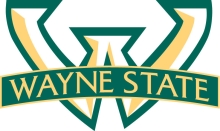Unearthing Detroit is a project that involves both academic research and public archaeology in its focus on the urban historical archaeology collections housed in the Grosscup Museum of Anthropology at Wayne State University. The project’s research and outreach team is comprised of archaeology faculty and graduate students from Wayne State’s Department of Anthropology, as well as a number of volunteers from the local community. We are excited to share more information about our project’s archaeological process and priorities with you here.
Background and Objectives
Unearthing Detroit began in 2013 with a return to the extensive Renaissance Center collections (excavated in 1973-74) that are held in the university’s Grosscup Museum of Anthropology. Home to the remains of over 20 large-scale excavations conducted at various Detroit sites over the past half-century, the Grosscup Museum contains one of the most extensive urban historical archaeology collections in the United States. Most of the museum’s urban archaeology collections were recovered during salvage excavations in 1960s-80s. Owing to the constraints of time, budget, and personnel that often accompanied such salvage excavations, the vast majority of these collections have yet to be fully catalogued, studied, published, and shared publicly. Over the next several years, the Unearthing Detroit Project will be working on re-excavating these forgotten collections, with an aim to improve access to the rich history and archaeology of the city.
What is Archaeology?
Archaeologists study the material remains of the human. In Detroit, we examine the traces of the city’s changing landscapes – excavated artifacts, building foundations, standing architecture, street layouts, neighborhoods – order to understand the past, reveal the unwritten histories of the city’s historically underrepresented communities, and promote the preservation of Detroit’s diverse cultural heritage.
Unearthing Detroit primarily works with historic-period collections that date to the period since the first Europeans arrived to Detroit in 1701. Historical archaeology is a sub-field and specialization within the discipline of archaeology. Historical archaeology connects things with people (and vice versa) by combining information from excavated artifacts, standing buildings, historical documents, and oral histories. Depending on a researcher’s questions, historical archaeology studies can investigate a wide variety of topics relating to daily life in the past, including: the composition and socio-economic statuses of households, foodways, health conditions, impacts of urbanization and industrialization, ethnic and race-based inequality, and various other themes. Analysis can uncover unrecorded information or bring new perspectives to the extant historical record. These contributions are important to present-day groups who wish to better identify with their own personal and community histories.
Our Project Team
Summer team includes Dr. Krysta Ryzewski, Kate E. Korth, Kaitlin Scharra, Samantha Malette, Sarah Beste, Slava Pallas, Sue Villerot, Don Adzigan and Mark Jazayeri.
Each member of our team uses skill sets derived from areas such as:
- Software design
- Historical and archival research
- Artifact analysis
- Public outreach
- Museum studies
- Excavation and survey methods
This interdisciplinary approach helps us join the many intricate pieces of an area’s cultural history.
Support
Financial and administrative support is provided to the Unearthing Detroit Project by the Research Enhancement Program in the Humanities, Office of the Vice President of Research, Wayne State University; the Grosscup Museum of Anthropology; the Department of Anthropology; the City of Detroit Parks and Recreation Department.
Navigation
We produce two of blogs that can be found in the blog menu
(1) Series posts – that follow the project’s progress, feature processes, report on events; (2) Topic posts – in-depth discussions about our research findings and events.

This work is licensed under a Creative Commons Attribution-NonCommercial-NoDerivatives 4.0 International License.


Any plans for documenting the excavation of the new Red Wings arena on Woodward Ave.?